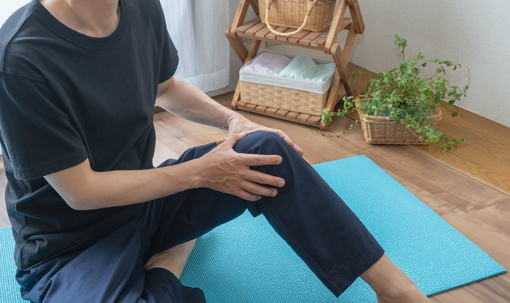This is our final blog in a three-part blog series.
Your physical therapist will individually determine the best treatment interventions based on which impairments are contributing to your patellofemoral symptoms. Consideration is also given to how acute or painful the condition is. The treatment chosen needs to match the stage of the patellofemoral symptoms and progressed as your symptoms are reduced. The following are common interventions that, if appropriate, may be included in the treatment of patellofemoral pain.
- Strength exercise: Strengthening exercises are generally targeted to the hip and knee muscles. These often initially begin with open kinetic chain exercises (exercises not done in weight bearing such as straight leg raises). When able closed kinetic chain exercises (exercises done in weight bearing such as squats) are added.
- Motor control exercise: This type of exercise focuses on alignment and pattern of movement rather than pure strength. This includes retraining of stairs, the sit to stand motion and running mechanics if appropriate.
- Stretching exercise: These exercises are designed to improve the flexibility of structures that are evaluated to be tight and causing excessive compression and/or abnormal tracking of the patella.
- Patellar taping: This is a technique used to alter the position of the patella/kneecap, thereby reducing pain. Current studies suggest that this method helps in the short term, but there is not much evidence to suggest that it helps in the long term.
- Knee bracing: There are braces, orthoses and sleeves designed for patellofemoral pain. More research is needed to evaluate the effects of these devices.
- Foot orthoses: As discussed before, some patients with patellofemoral syndrome have excessive foot pronation. If this is one of the impairments, a prefabricated or custom orthoses may be beneficial.
- Manual therapy: Hands on treatment to improve the flexibility of the patella/kneecap and other soft tissue structures around the knee is often used. Current research suggests that this is only effective if combined with appropriate exercise therapy.
References:
- Patellofemoral pain syndrome. Physiopedia website. Accessed at: https://www.physio-pedia.com/Patellofemoral_Pain_Syndrome
- Willy RW, Hoglund LT, Barton CJ, Bolgla LA, Scalzitti DA, Logerstedt DS, Lynch AD, Snyder-Mackler L, McDonough CM. Patellofemoral pain. J Orthop Sports Phys Ther 2019 Sep 49(9): CPG1-CPG95.

